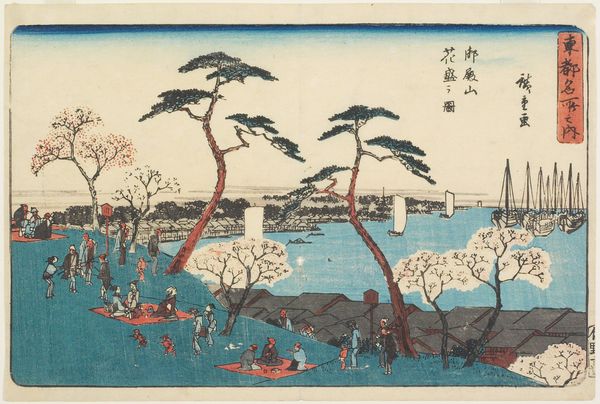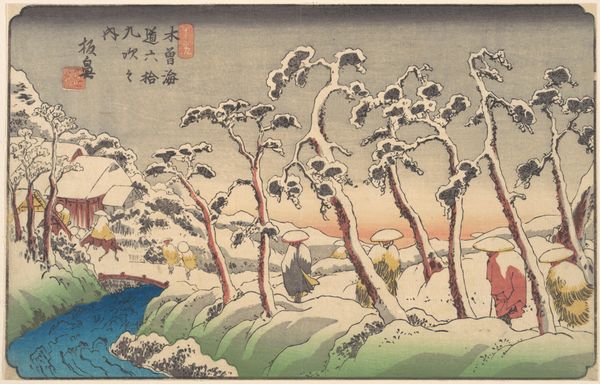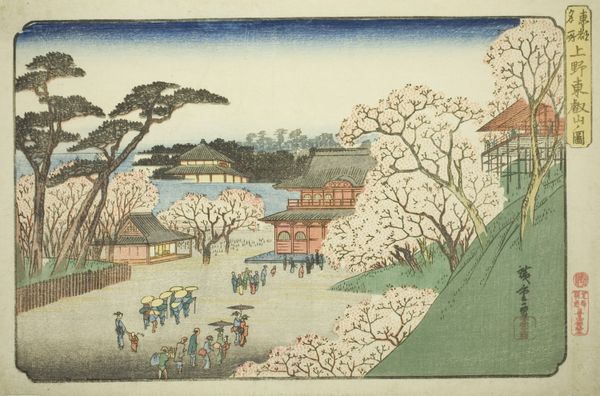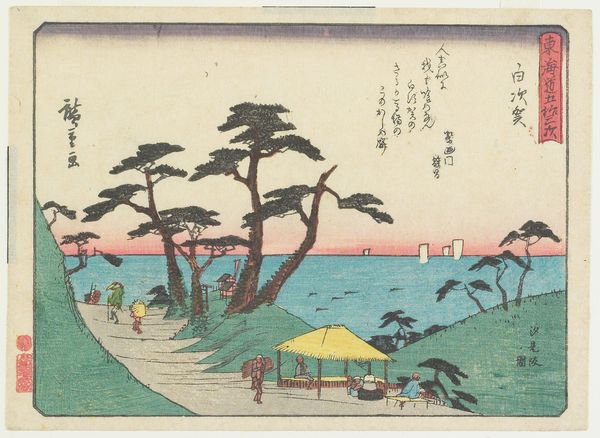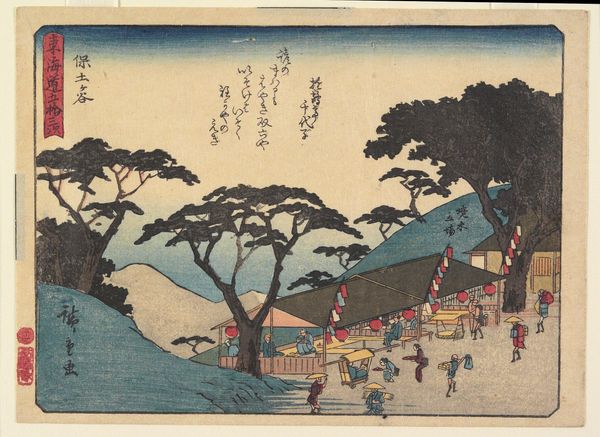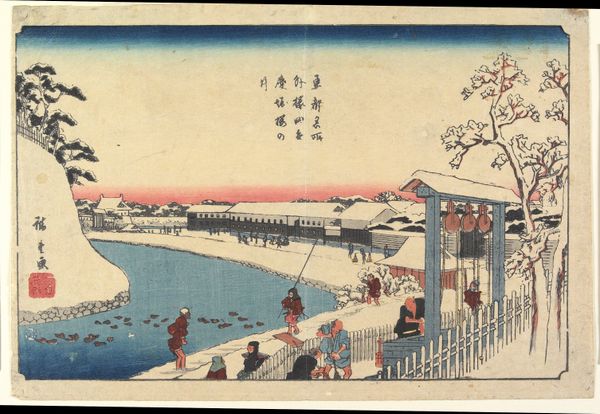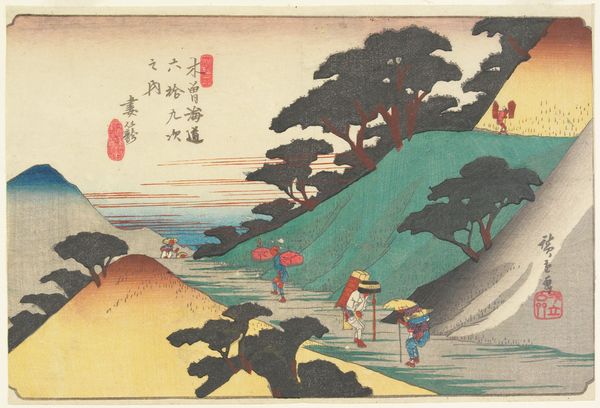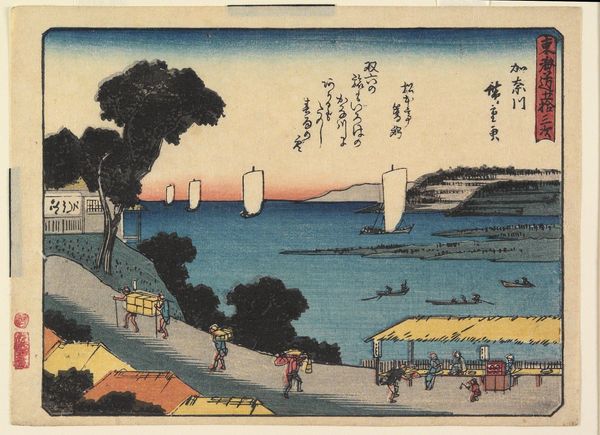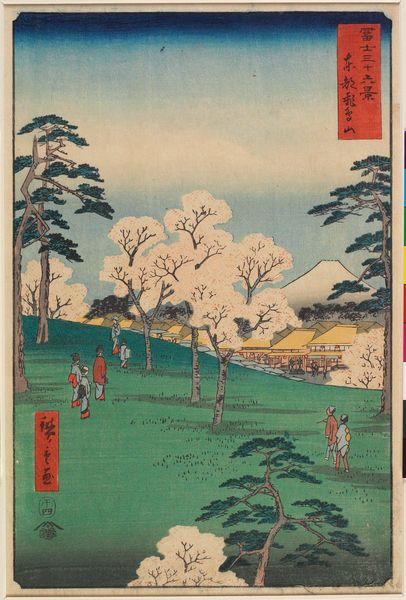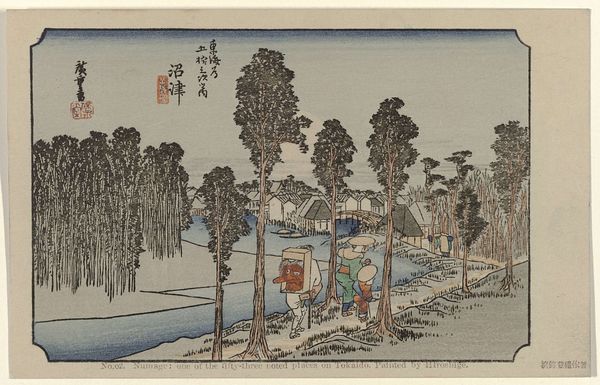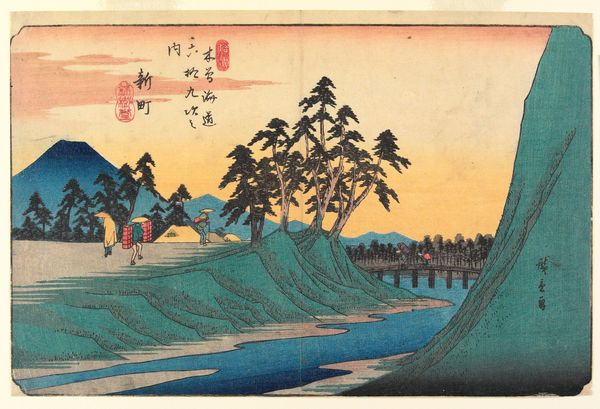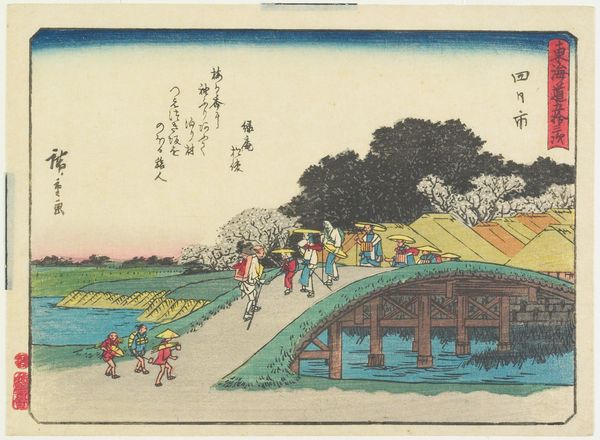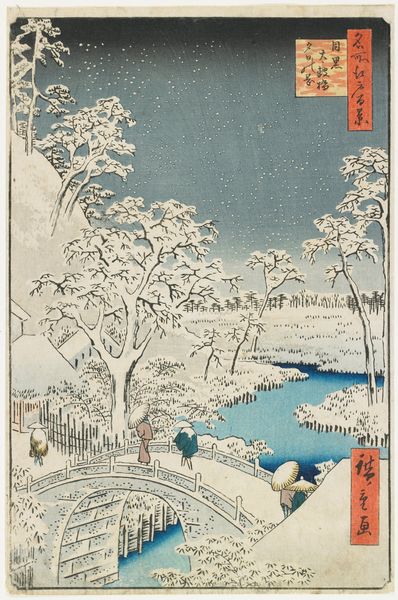
Cherry Trees in Bloom on the Embankment at Koganei 1843
0:00
0:00
Dimensions: 8 3/4 × 13 9/16 in. (22.2 × 34.5 cm) (image, horizontal ōban)
Copyright: Public Domain
Curator: Looking at Utagawa Hiroshige's woodblock print, "Cherry Trees in Bloom on the Embankment at Koganei," created around 1843, I am struck by how the ephemeral beauty of the cherry blossoms intertwines with the lives of those who observe them. Editor: It’s quite lovely, isn’t it? The subtle color palette, particularly the pale pinks against the blue water, create a serene, almost melancholic mood. What about the materiality and method used to achieve such an aesthetic? Curator: The printmaking process, deeply embedded in the social structures of Edo-period Japan, democratized art, making it accessible to a wider audience. Woodblock prints, like this one, allowed for the mass production of imagery, fostering a shared cultural visual experience. The ukiyo-e tradition, literally 'pictures of the floating world', engaged in themes of transient beauty. The people here remind me of women in similar social positions rendered in the prints of the same time. Editor: I’m always drawn to the craftsmanship itself. Each line meticulously carved into the wood, each color carefully layered, it all speaks volumes about the labor involved. The wood itself would have been sourced locally, chosen for its grain and texture, adding another layer to our understanding. Are these cherry trees specific cultivars, carefully maintained to enhance their bloom? How would such maintenance intersect with traditional gendered labour? Curator: Certainly, the choice of subject is deliberate. The cherry blossom, or sakura, held profound symbolic significance in Japanese culture, representing themes of mortality, renewal, and the fleeting nature of life. Observing it today makes me consider the status of women reflected in traditional views of ephemeral beauty and social roles. The landscape isn't just a pretty background; it is a reflection of an underlying structure. Editor: Absolutely. Thinking about the production of these prints also makes you consider its consumption and distribution: from the workshops, the local economies sustained. But, also the wider world given the exchange networks operating through Edo Japan. Curator: This single print is just one iteration. It acts as a conduit, linking the viewer to a moment, to the hands of the artists, carvers, and printers involved in its making, and indeed, even further afield as it moves out in circulation, inviting critical reflection. Editor: Looking closely makes us reflect not just on the aesthetic qualities, but also the material reality and social impact. Thanks.
Comments
No comments
Be the first to comment and join the conversation on the ultimate creative platform.
